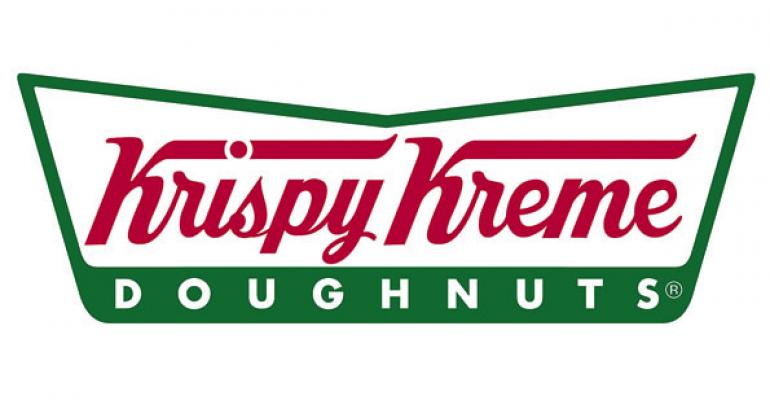Krispy Kreme Doughnuts Inc. believes it would be better off if someone else built and operated its shops.
The Winston Salem, N.C.-based doughnut chain plans to focus more exclusively on franchising in the coming years, executives said during the company’s earnings call Tuesday. Their reason is simple: Franchisees have been doing a better job than the company at operating the chain’s locations.
“Domestically, our franchisees continue to outperform our company shops,” Krispy Kreme CEO Tony Thompson said during the call. “Thus, we believe that by focusing more on franchising, we will be in a greater position to maximize the value of the brand for the long term.”
Consider the fourth quarter ended Jan. 31. Company-operated locations in the U.S. reported same-store sales growth of 0.2 percent. But franchisee same-store sales rose 2.5 percent.
Krispy Kreme has 297 domestic locations. Franchisees operate 181 of those locations after adding a net 14 units. The company, by contrast, opened a net five locations over the past fiscal year, after factoring in five closed company units. Franchisees operate all 824 of the chain’s international locations.
To focus more on franchising, however, the company has to make several investments and changes to help operators build more profitable locations and generate higher sales from those units.
Krispy Kreme has several initiatives in place to reduce the investment cost for new stores by “several hundred thousand dollars,” Thompson said. That includes lower costs for construction, site location, equipment and pre-opening.
The company also wants to improve the flow within the shops to improve the customer ordering process and help boost revenue.
Krispy Kreme has long wanted to drive more coffee sales. The company opened a new location in Clemmons, N.C., outside of Winston-Salem, with a new ordering design specifically to improve beverage sales. Coffee represents only 5 percent of the chain’s sales, and the company’s ultimate goal is to increase that percentage.
Thompson said during the earnings call that the design has improved beverage sales at that location, and the company plans to retrofit more locations this year to drive beverage sales.
“Everything we’re doing to our new shop model is geared toward driving franchisees’ return and profitability,” Thompson said.
But it’s not just profitability. Thompson said the entire company culture has to change to focus more on supporting and improving franchisee operations.
“We will begin a cultural change inside our organization domestically to become more franchise-support focused,” he said, noting that the company will work to improve support for technology, finance, development and real estate. “This is an area we need to be not merely good, but great.”
Krispy Kreme wants to become more of a marketing-driven company and work on customer engagement efforts such as a loyalty program and its mobile platform. The chain is currently searching for a chief marketing officer.
Company executives said they are making investments to improve the franchising business in the coming years. Thompson said they will provide more details later this year.
Krispy Kreme revenues in the fourth quarter rose 4 percent, to $130.4 million, from $125.4 million the previous year, while total domestic same-store sales rose 1.6 percent in the fourth quarter. Those numbers fell below Wall Street expectations, and the stock price slipped 5 percent on Wednesday. The stock, which had been up slightly entering Wednesday trading, is now down for the year.
Besides the franchising efforts, company executives also discussed ways to improve unit operations.
The company plans to use more full-time staff at its restaurants. The move will result in higher health care costs for Krispy Kreme, but executives suggested that it would result in better service.
“The shift, which our industry saw a few years ago, toward higher numbers of part-time employees has, we believe, adversely impacted the quality of the talent that we are able to recruit to our shops,” Thompson said.
In addition, the company is using incentives at the unit level to help improve beverage sales and unit-level margins.
“We are already seeing a few percentage points of increase in our beverage attachment rate,” Thompson said. That comes in advance of the chain’s relaunch of its drip coffee program, expected this spring.
Contact Jonathan Maze at [email protected]
Follow him on Twitter: @jonathanmaze





